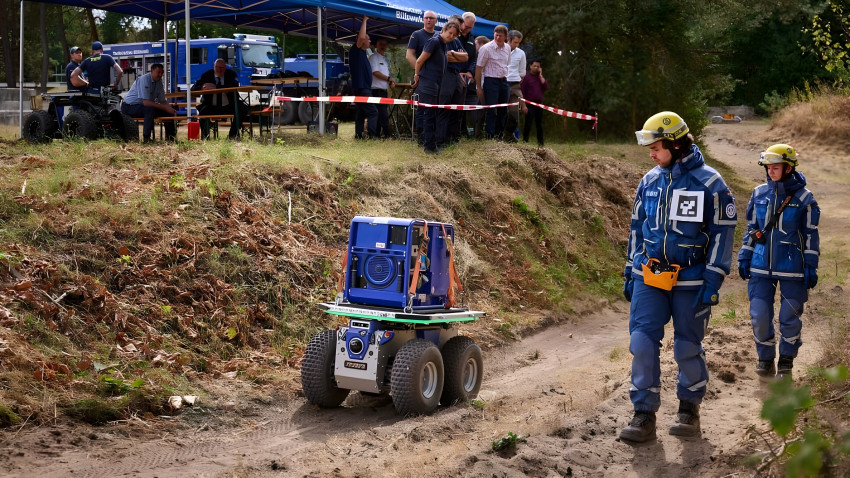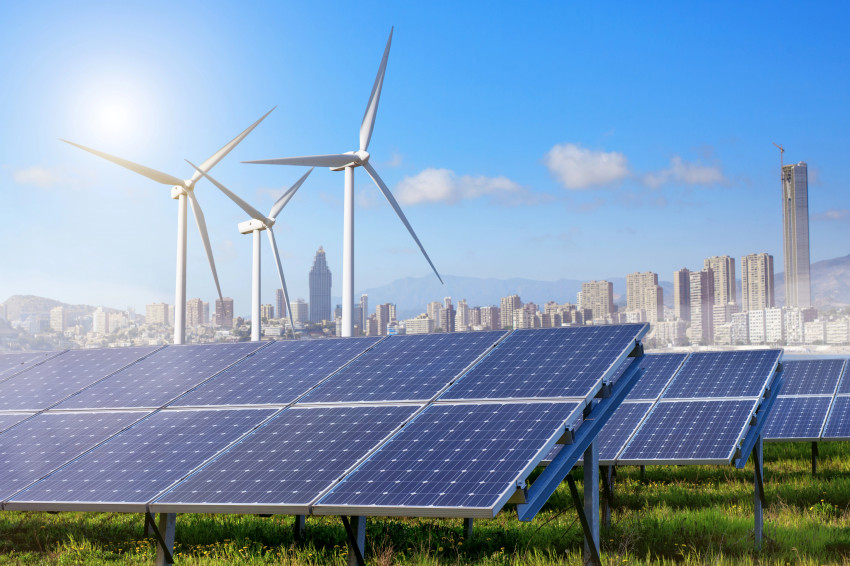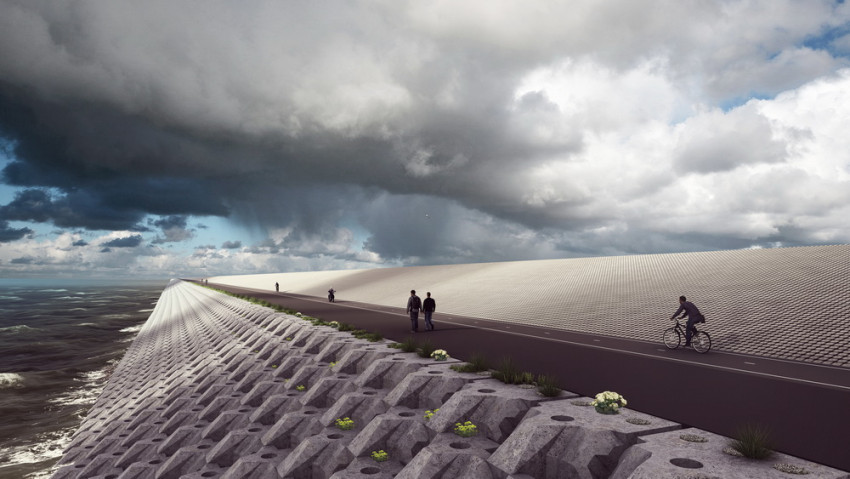
Facelift for the Afsluitdijk
The Afsluitdijk is getting a major overhaul: concrete cladding on the Wadden Sea side, and extra sluices and pumps at Den Oever in order to discharge water from the IJssel river.
Plans were announced yesterday for the Levvel- construction consortium to tackle the reinforcement of the Afsluitdijk. This took place in the recently opened Afsluitdijk Wadden Centre at Kornwederzand. The reinforcement operation turned out to be necessary after it became apparent in 2006 that the 86-year-old dike no longer meets today's safety standards.
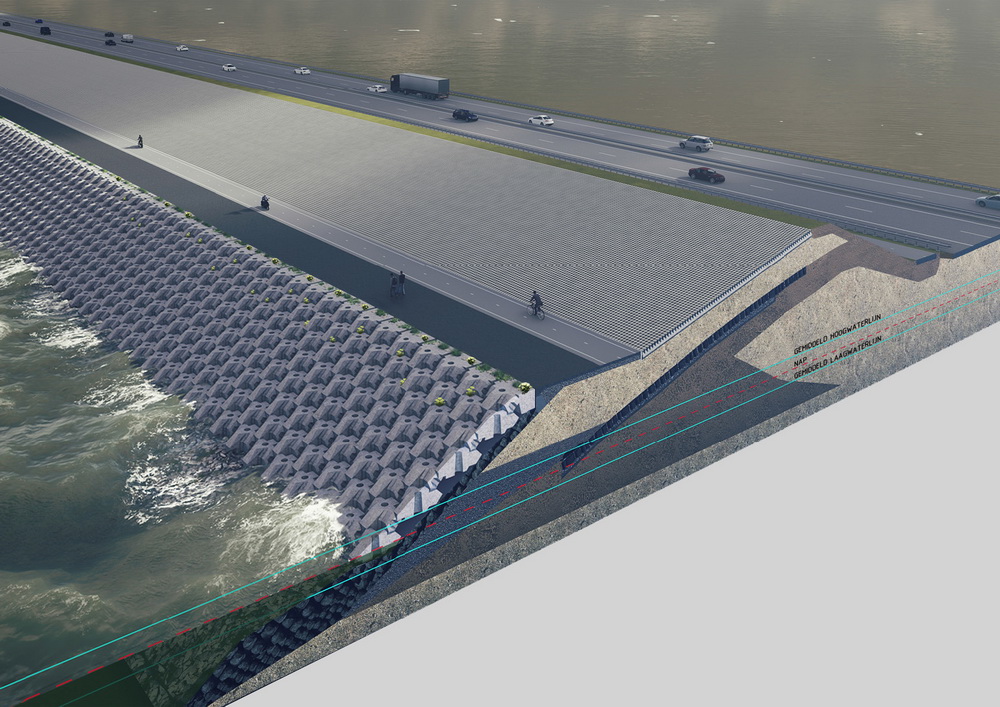
The most important intervention is on the Wadden Sea side: there the dike will be broadened and raised by maximum 2 m in the centre, and will be fitted with new cladding at the base, the section hit the hardest by the waves under stormy conditions. The construction consortium, consisting of BAM construction company, Van Oord offshore company and Rebel contractors, has developed a concrete block shaped especially for that purpose, measuring a number of metres and slotting together like roof tiles. 'Tests in a wave basin showed the dike cladding with a set of our blocks to be able to withstand wave forces twice as strong as the most severe storm the dike has to be able to face,' explains Carlos Mollet of Van Oord.
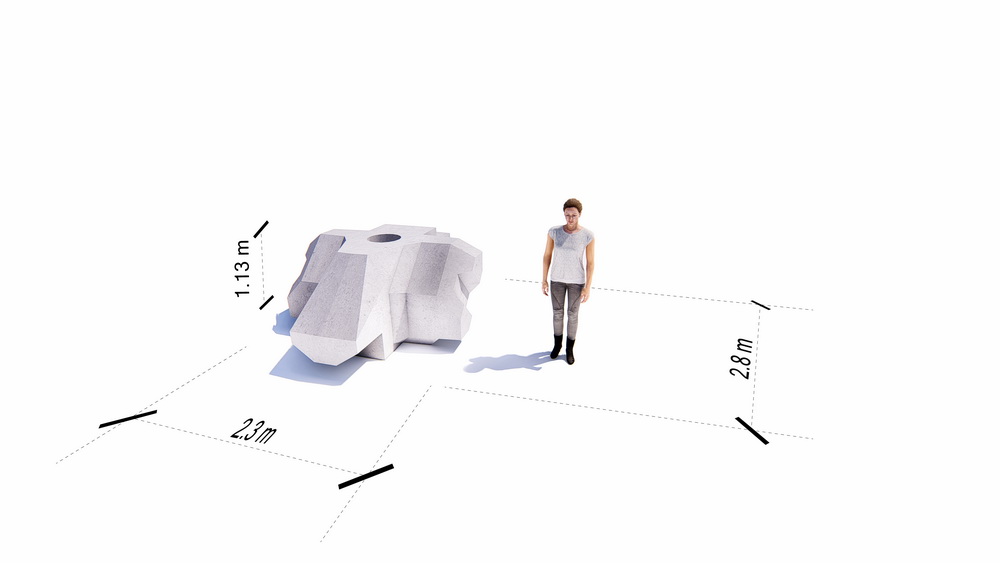
The dike is currently clad with basalt blocks which were installed manually back in the day, whereas the specially shaped new blocks will be put in place using a crane working from a pontoon barge. And so the cladding on the Wadden Sea side of the dike will be much more robust and rugged than it is at the moment. 75,000 of the blocks will be laid out over the entire length of the dike. They will be constructed in a fully automated factory constructed specially for that purpose in Harlingen. A cycle path will also be included on the reinforced outer side of the dike along the Wadden Sea.
Extra sluices and pumps
A second important intervention is the inclusion of extra sluices and the installation of six pumps near the Stevinsluizen sluice complex at Den Oever. This increased drainage capacity and the installation of the pumps must ensure that water from the IJssel river can continue to be successfully drained to the Wadden Sea in decades to come, keeping the water level in the IJsselmeer lake more or less stable. In the past, the IJssel drained directly into the Zuiderzee, but now needs to pass through the drainage sluices to the Wadden Sea.
Until now, this drainage process took place via the sluices at Den Oever and Kornwederzand by gravity drainage. At low tide, the water in the Wadden Sea is lower than that of the IJsselmeer lake, and the water is naturally drained away, while the drainage sluices are closed at high tide.
However, if sea levels rise as forecast, there will be less and less time available for gravity drainage. 'We can partly compensate this by creating extra drainage capacity between the existing drainage sluices,' says Carlo Kuiper of BAM. More water can then be drained through the dike in a shorter period of time. Pumps will also be installed. They can drain water into the Wadden Sea even if the water level there is higher than in the IJsselmeer lake. Based on the current prognoses for rising sea levels, the pumps are not expected to be needed until 2037, after which they will increasingly be required to do the job.

The consortium paid close attention to the appearance of the new installations. That was indeed an important requirement of the zoning plan established for reinforcement of the Afsluitdijk. The white lifting towers of the drainage sluices on each side of the dike are a particularly striking element. 'We want to keep that intact wherever possible,' says Kuiper of BAM. The only visible part of the new drainage sluices are the dark-coloured plates between the white lifting towers of the existing sluice complex. 'They follow the existing pattern of the towers and are clearly distinguishable.' As for the pumps, only the transparent domes can be seen, containing the motor driving the pump under ground level.

Fish migration
The construction consortium will also provide a permanent opening in the dike for the fish migration river: an artificial winding river to ensure fish from the Wadden Sea can swim uninhibited to the IJsselmeer lake, while the river meanders so strongly that it becomes fresh water before ending up in the lake. The fish migration river itself will be constructed by the Afsluitdijk provinces of Noord-Holland and Friesland, as well as the neighbouring municipalities.

In Dutch, the name of the Levvel construction consortium refers to safeguarding the heritage of Engineer Lely, who was responsible for the Afsluitdijk. The consortium will conduct the work and 25 years' maintenance for the sum of 550 million euros. The dike overhaul will be completed by late 2022.
If you found this article interesting, subscribe for free to our weekly newsletter!

